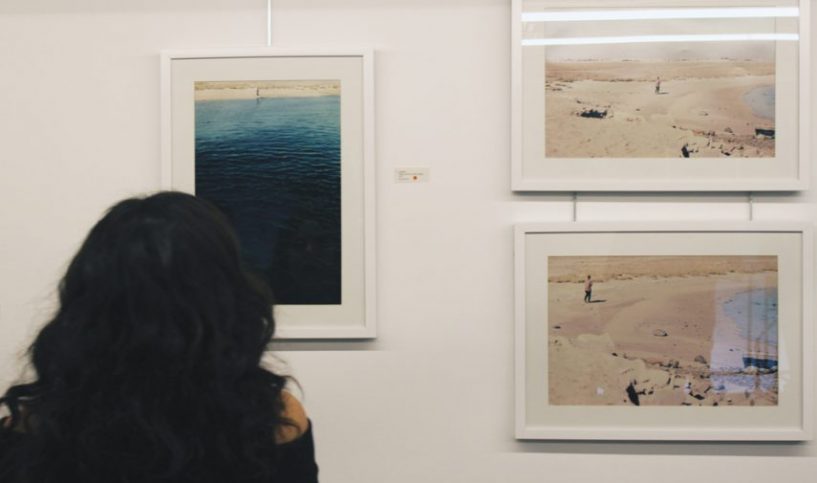By Kingdome Magazine’s Ashley Alleluya
In my mind, Shahad Bishara is slowly emerging as the person in Kuwait whose artistic eye must not be questioned. After having attended a handful of events that she’s helped curate, I found myself attending Absence by photographer, Aziz Mutawa at Visual Therapy on a Thursday evening, drawn in by the artist she chose to give her support to.
“I’m a huge fan of Shahad’s initiatives and I’m honored to have had her curate the exhibition at her space. Shahad gave me the boost of confidence to finally exhibit after so much hesitation,” Aziz gushed about Shahad, confirming that she really is the unofficial godmother of the artistic community.
With this faith I walked into the familiar gallery, ready to immerse myself in it the best I could. The layout of Aziz’s work was linear in display, but very non-linear once you begin taking them in. A row of photographs, all displayed alongside the walls of Visual Therapy’s space, without any overt guidance about where you start from or how you should progress. Such is the mastery of the visual storytelling of Aziz Mutawa’s work. It gives you multiple perspectives, countless pairings and a deceptively deep storyboard with a pick-your-own-adventure aesthetic.
The settings of these adventures immediately piques my interest. “My father and I used to go on nature walks in Doha and explore the different textures of the coastal areas,” Aziz told me of his choice of venue. “Documenting the area, I began to feel such an intense attachment to the coast. Ever since then, I’ve seen earth textures as skin and started to introduce skin-like colors to my work.”
The visual language that Aziz uses is crisp with almost obsessively geometric lines and angles. Of his style, Aziz said, “it is so important to give each color tone its place to comfortably exist and breathe before seeping into the next element.” I wonder what brought on the inspiration to incorporate these buildings, roads and areas into his theme. Aziz credits the “seemingly endless construction sites that started seeping out of the city and into the northern coast of Kuwait. With the increased pressure on housing, these pastel pink colored structures began to rise in the middle of nature reserves, giving me inspiration to create a narrative around these absent structures and the environment around them.”
As is with a lot evocative art, this series of photographs emphasizes the understanding that Aziz has with his model. “Afraa and her family are actually close friends of mine which made our communication during the shoot nonverbal. We both understood how the concept was relevant to both our lives,” he explained.
Around me, I heard phrases like “interesting angles” and “strange but fascinating” from the crowd. Wondering if this was the response he anticipated, I asked him about the feedback, to which he replied,”The biggest highlight for me was seeing the work come to life in print. I suggest that photographers start printing their work and running small exhibitions more often.”
“From my pieces, ‘Seaskin’ got a lot of attention,” Aziz said. “It was interesting to see how a small majority had the urban industrial images speak to them more than the nature and ocean ones,” he continued, probably referring to the stark beauty that ‘strandskin’ possesses. ‘Strandskin’ to me was a gateway to exploring the black and yellow metal structures that seem to pop out of nowhere all around the region,” Aziz offered. “This [the black and yellow metal structures] is what my next series will be exploring and I am already shaking out of excitement to start.”
Before I made my peace with the beauty of this exhibit, I needed to know what these pictures meant to Aziz personally. “I see a lot of myself in this series when I consider all the times I found myself absent,” he replied. “Another side of this narrative talks about the accumulation of overlooked details that often leave us stranded,” he elaborated. “This was why it was important for me to set this narrative in such an area where one is almost asked to get lost.” In the process of finding his way into the natural reserve, Aziz surrendered himself to the language of the location, bringing to us a story that echoes the absence we feel daily on a multitude of levels. For introducing me to this part within me with his photography, I am grateful.
Originally published on www.Kingdome.co. You can follow Kingdome on Facebook and Soundcloud: @KingdomeMagazine, Instagram @Kingdome.co, Twitter @KingdomeCo and on YouTube: Kingdome Magazine.











